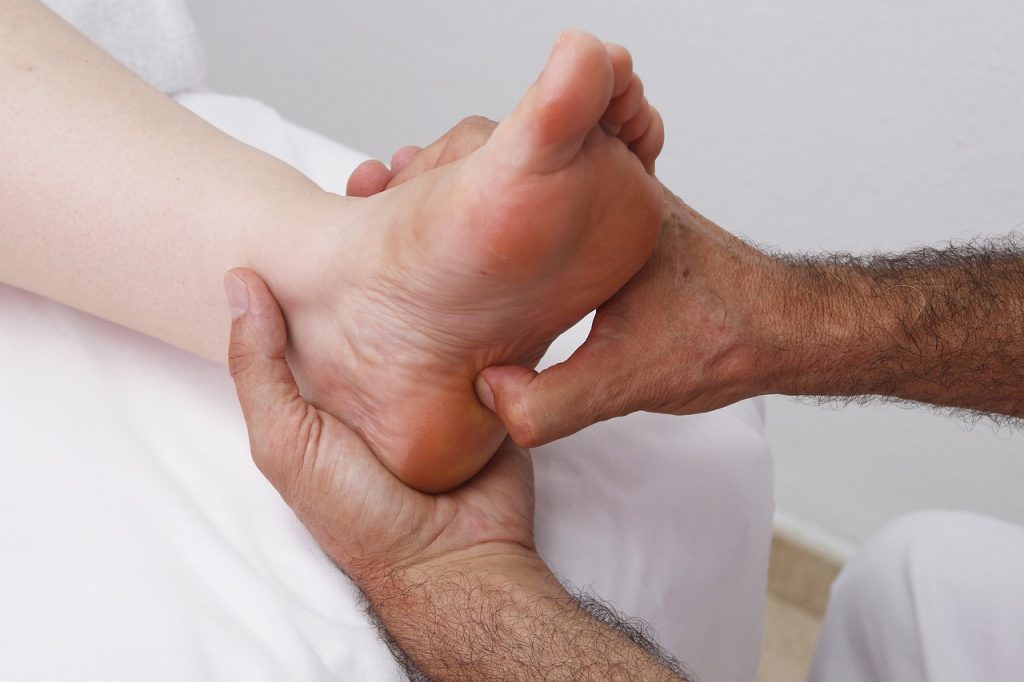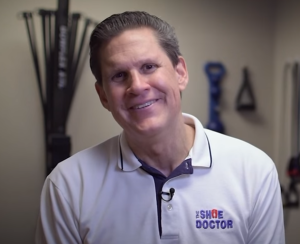Have you ever heard of Metatarsalgia? It’s a condition in which there is pain or inflammation in the ball of the foot that affects the metatarsals – bones connecting the ankle bones to the toes. Have you or a loved one experienced pain due to Metatarsalgia? Looking for something for long-term relief? You can surely get immediate relief through a number of ways but for long-term comfort, customized orthotics is an imperative part of the treatment for both Pedorthists and Podiatrists alike.
In this article, we discuss what Metatarsalgia is, how it is caused, and the due course of treatment. We will also answer some of the most frequently asked questions about Metatarsalgia.
What Is Metatarsalgia?
Metatarsalgia is a condition in which there is pain or inflammation in the area between the arches and toes of the foot. This area is known as the ball of the foot. This condition is named Metatarsalgia, as this condition affects the metatarsals – bones connecting the ankle bones to the toes. The arch between the ball of the big toe and the little toe has collapsed and pinches the nerve between the balls of one or more toes.
Often people mistake Metatarsalgia for symptoms of some other disease rather than seeing it as a condition. It usually arises when there is an injury to the metatarsals. Metatarsalgia is caused in most cases by the overuse of your feet.
You can also develop it because of excessive running and jumping. Wearing shoes of the wrong size and foot deformities can also be a trigger to Metatarsalgia. This condition can affect your daily activities, so the earlier you diagnose it, the better.
What Causes Metatarsalgia?
There are many causes of Metatarsalgia, and it can also be correlated with many other disorders of the foot, like:
- Inflammatory arthritis
- Sesamoiditis
- Avascular necrosis
Some other populations where Metatarsalgia is prevalent include:
- People with active sports life. People who have a very active sports life and go through intense training are at high risk of metatarsalgia. People who wear high-heeled and tight-fitting shoes can also suffer from this as such footwear exert pressure on the metatarsal.
- People with foot deformities. People with foot deformities, for instance, the ones with their second toe bigger than the big toe, are a high-risk group too. Such a peculiarity can cause more pressure to be exerted on the second metatarsal; this can lead to metatarsalgia.
- Obesity. Excess weight could cause metatarsalgia, because when we move, our weight gets transferred to our feet; more pounds mean more pressure on your metatarsal.
How Do I Treat Metatarsalgia?
Metatarsalgia can be treated in different ways. The initial step to getting rid of the pain you feel is to put ice packs and elevate your leg so that it reduces the inflammation and reduces the pressure. You can treat the symptoms or find to cause prevent Metatarsalgia from recurring.
- Rest your feet. Athletes and sports enthusiasts should rest their feet often to help with the pain. You can treat metatarsalgia by bringing some changes to your lifestyle.
- Pain reliever medicine. Take pain reliever medicine to help you deal with the pain and inflammation. Avoid wearing shoes that are tight-fitting around the toes; the same applies for heels too.
- Metatarsal Pads. Put metatarsal pads in your shoes near the metatarsal to deflect stress from the affected area. Buy arch supports to minimize the stress and pressure exerted on the metatarsal.
- Custom Orthotics. Getting fitted for custom orthotics from a certified pedorthist in your area can provide immediate relief and allow your feet to heal. The right orthotics will support all three arches to address the cause and immediately relieve the pain.
How Long Does It Take for Metatarsalgia to Go Away?
The duration of metatarsalgia depends on what caused it in the first place. In most cases, with effective remedies, metatarsalgia can be treated within two months. However, straining your feet during treatment can lead to extending the duration of metatarsalgia. After the pain is gone, you can start exercising to prevent it from occurring again.
Do I Need to See a Doctor for Metatarsalgia?
When you feel pain or inflammation in your foot near the metatarsal, please book an appointment with the doctor and get it checked. Make a list of all the symptoms and tell the doctor.
- Persistent Burning Sensation
If there is a sharp, burning feeling in your feet, or if you feel numbness in your toes or experience pain when you walk, it is the right time to visit your doctor. The doctor will perform some tests and take x-rays to confirm the presence (or absence) of metatarsalgia.
- Callus at Your Feet
If there is callus at the end of your feet, the doctor will scrape it off to reduce the pressure exerted. The doctor might give you an injection as well to relieve the pain.
- Surgery
There are some rare cases where surgery was done to treat metatarsalgia. Surgery does not address the cause of Metatarsalgia. Surgically remove the nerve between the toes to stop the pain. We have had many patients over the years that have their Metatarsalgia return after surgery.
Remember, the 3 Arches of Your Feet Still Need Support!
Contrary to what it may look like, your feet have a complex structure. They are the first line of defense against balance-related issues, which are caused by improper care and an uncomfortable lifestyle. The arches of your feet provide you with the stability you need in your daily life, so put your foot down and push back against balance issues. With both feet on the ground, dedicate yourself to giving them the longevity they deserve. To get custom orthotic inserts for healthy feet, give us a call.
The Shoe Doctor Has Specialized in Providing Custom Orthotics for 20 Years
Delaying to get your feet checked can lead to consequences that could last a lifetime. With the necessary precautions and timely treatment, you can completely avoid metatarsalgia. The correct orthotic insoles can negate foot, knee, and hip pain and at the same time enhance performance and comfort. Russel at The Shoe Doctor will help you find the ideal solution for your problems.
We will create a 3D map of your feet and make custom orthotics for your hiking boots, everyday shoes, and everything else in between. Lend your patient ears to our advice, your troubled feet to our orthotics, and find yourself performing at the peak of your abilities in no time! If you are in the San Francisco Bay Area or just passing by, give The Shoe Doctor a call to gift your feet what they long yearned for — the best orthotics in the area! We are here to assist you, give us a call at (925) 820-0220 for your free consultation.


